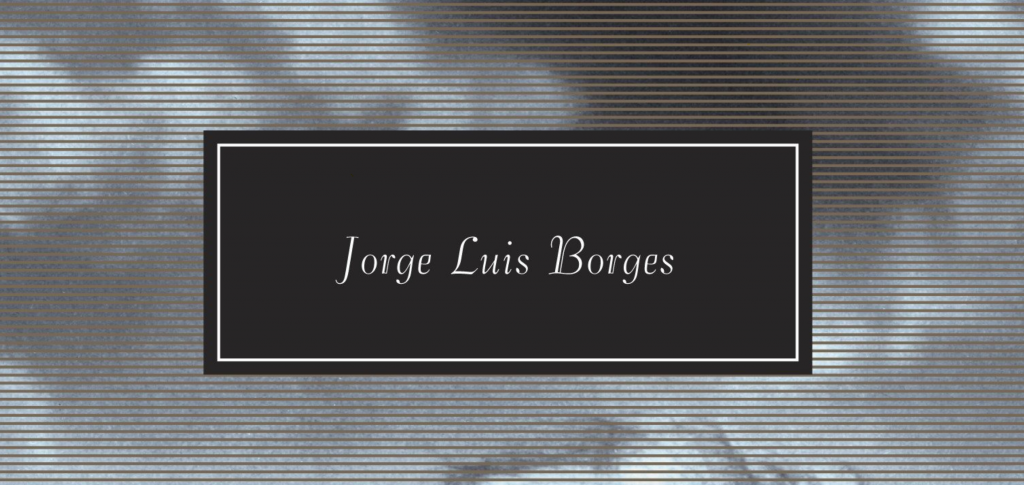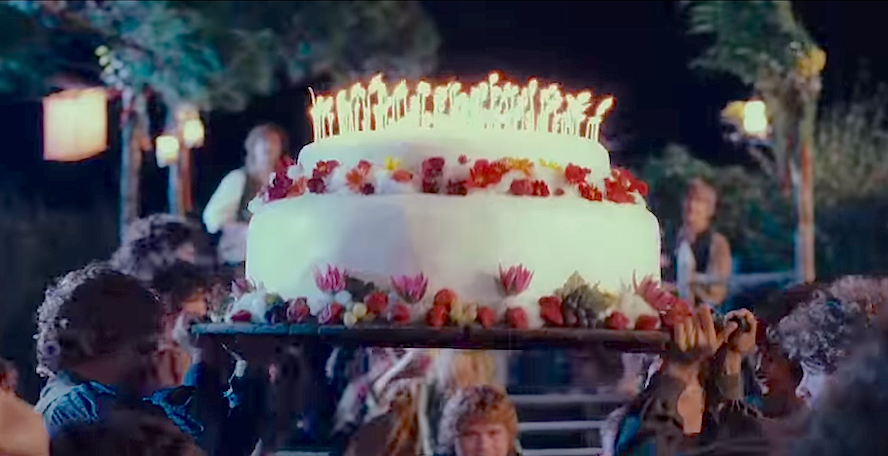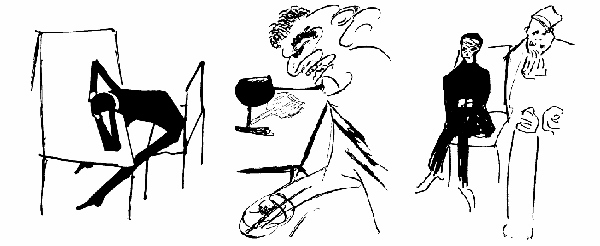Happy Birthday, Jorge Luis Borges! 5 Ways He’s Stuck Around in Pop Culture
[Image from book cover of Ficciones by Jorge Luis Borges, Penguin Random House]
Jorge Luis Borges, the Argentinian short story writer who paved the way for magical realism, would be 118 years old if he were alive today. Since he passed into the great labyrinthine library in the sky in 1986, though, we wanted to honor him by writing about all the ways this literary visionary lives on.
Borges, who grew up in capital cities all over the globe, pioneered a dreamy, surreal kind of fiction that made him one of the most famous writers of the 60s, 70s, and 80s. He helped sci-fi and fantasy grow into the booming genres they are today, and he influenced writers as diverse as Grant Morrison, Italo Calvino, Neil Gaiman, Joyce Carol Oates, and Harlan Ellison.
Here are a few examples of all the books, movies, and comics Borges made possible. Cheers, sir!
1. The Name of the Rose
If you haven’t read this bonkers novel by Umberto Eco, add it to your reading list. Eco’s debut novel tells the story of Adso, a young monk from the 1300s who helps solve a series of murders at a mysterious Italian abbey. It’s part historical fiction, part detective story, part thriller…and made better by not only referencing Borges, but including him as a character.
Jorge de Borgos is an old, blind monk at the abbey. He’s a severe dude who guards the abbey’s library like a hawk and chastises people who laugh. In real life, Jorge Luis Borges went blind by the age of 55 and was notably, uh, touchy (he decided that his early stories weren’t worth reading, so he did the logical thing, which was to…try to burn every copy).
One of Borges’s most famous short stories is “The Library of Babel,” in which a nameless narrator wanders alone through a series of hexagonal rooms. The wall of each room contains bookshelves, and together, all the rooms hold every book a person ever has or could write.
The abbey’s library is also – wouldn’t you know it – an oddly-shaped labyrinth, and (SPOILERS) Borgos the librarian is eventually revealed to be the killer. Just like his real-life namesake, Borgos controlled everything that happened inside the library.
Coincidence? No way, Jorge.

[Movie still from Interstellar, Paramount Pictures and Warner Bros Pictures]
2. Interstellar
You’ve probably seen or heard of Interstellar, the 2014 sci-fi blockbuster by Christopher Nolan. But did you know that, like The Name of the Rose, Interstellar was also inspired by “The Library of Babel”?
The astronaut Coop (Matthew McConaughey) pilots a spaceship carrying the embryos that are supposed to let humanity start over again. Long, long story short, he and the crew skirt around a wormhole and time gets stretched out like a spaghetti noodle. Eventually Coop ends up in a tesseract, which as far as I can tell is a four-dimensional cube (though I am not really qualified to say, so please don’t @ me). He’s able to peer into his daughter Murphy’s life through – yes – an endless series of bookshelves.
In this scene, time turns into a series of infinite books: Coop can “read from” any moment in Murphy’s life. He becomes the confused, wandering narrator from “The Library of Babel.”
Christopher Nolan has said before that Borges is a major influence, so it’s definitely plausible that he meant to call up images from this famous Borges story.
3. Secret Avengers
The Secret Avengers comic book series depicts a black-ops wing of the superhero squad we’ve come to love through the Avengers movies. When this Marvel series came out in 2010, it starred Maria Hill, Nick Fury, Phil Coulson, and Steve Rogers (Captain America). It’s gotten great reviews for its character-focused storyline that critiques real current events.
What you might not know about the Secret Avengers is that its latest arc is directly inspired by the Borges short story “Tlön, Uqbar, Orbis Tertius” (which also inspired Grant Morrison to write Doom Patrol). “Tlön” is a first-person story that features Borges himself as the narrator, so it’s even more difficult than usual to find the line between fact and fiction – which is scary, given the story’s subject. Borges begins to find references to lost lands named Uqbar and Tlön in encyclopedias and maps. As the years pass, they becomes increasingly real, and the world we know gradually gets subsumed into Tlön.
In Secret Avengers, Maria Hill and her squad of heroes have to fight terrifying monsters from – you guessed it – Tlön. As in the Borges story, the more people think about Tlön, the more “gateways” seem to open up between Tlön and the real world.
When one of the characters, Vladimir, is transported to Tlön, he meets a strange being. He says, “Jorg–” before the being cuts him off. Readers never find out exactly who that being is…but it doesn’t take a rocket scientist to guess Jorge Luis Borges himself.

[Movie still from Fear and Loathing in Las Vegas, Universal Pictures]
4. Hunter S. Thompson
In the story “Pierre Menard, Author of the Quixote,” a translator becomes so fixated on the idea of writing a perfect translation of Don Quixote (by Cervantes) that he decides to train himself to rewrite it. Not copy it, mind you. Write it himself. Menard studies seventeeth-century Spanish so that he’s capable of writing the exact same book, word for word, but under different circumstances.
Hunter S. Thompson, the father of gonzo journalism, attempted something similar to Menard when he was a student at Columbia in the 1950s. He bought a typewriter, cracked open copies of The Great Gatsby (F. Scott Fitzgerald) and A Farewell to Arms (Ernest Hemingway), and re-typed the entire manuscripts himself. Thompson did it “just to get the feeling of what it was like to write that way,” according to the New Yorker.
No one knows if Thompson was taking a page from Menard’s fictional book, but it’s possible. “Pierre Menard, Author of the Quixote” first appeared in Borges’s collection Ficciones, which came out in 1939.
5. House of Leaves
House of Leaves, by Mark Z. Danielewski, is one of the neatest books we’ve ever read. Part love story, part horror novel, the book features colored text and spacing tricks to make the reader feel what the characters are feeling.
Danielewski tells the story of a documentary filmmaker and his family who move into a house that keeps getting bigger on the inside, but not the outside. Eventually, the filmmaker (Will Navidson) sets off into the alternate dimension inside his home to record what he sees.
We know the author is a fan of Borges – House of Leaves has copious footnotes, and one of them is for a fictional book by Pierre Menard (sound familiar?). But the short story Danielewski used as a foundation is “The House of Asterion.” In the story, a man describes the strange house he never leaves: a labyrinth of rooms with doors that don’t lock. At the end, you realize that the man is Asterion, the minotaur from the myth of Theseus and Ariadne.
Just like the labyrinth in Crete, Navidson’s house has many dark rooms with unlocked doors. The explorers sometimes hear a strange creature making noises in the dark, and many of the explorers die while they’re inside.
Creepy? More than a little bit. But House of Leaves is a fantastic, if sometimes terrifying, read.
What’s your favorite Borges short story? Let us know in the comments!







